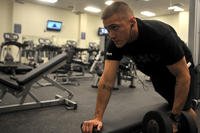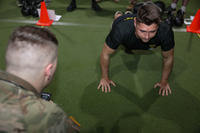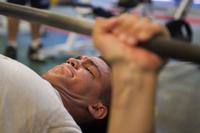Many of us get in the habit of training -- which is a good thing -- but we also are creatures of habit and typically will do many of the same workouts each week, even if on a split routine. If nothing changes from day to day, don't expect changes in your fitness level and performance.
When it comes to fitness testing and tactical fitness performance goals, you have to build a progressive training plan that incorporates everything you need: specific exercises and movements, energy system work balance and progressive changes to the FITT principle, or frequency, intensity, time, type.
The following changes or additions to your current training routine will add variety, fix any stale feelings toward exercise and provide new challenges to make you the tactical athlete you seek to become.
Elements of fitness: For tactical fitness goals, the requirement is to build a solid foundation and balance of strength, power, speed, agility, endurance (run, swim, ruck), muscle stamina (strength-endurance), flexibility, mobility and grip. All of the above are needed to build the level of durability and work capacity needed to get to and through training, as well as maintain your fitness abilities to do your job.
Specific exercises and movements: You cannot do burpees and expect to perform better in pull-ups. This is common sense, but many fail to focus on specific exercises and movements for their future testing and selection training. Then they don't perform as well as they would have liked and maybe even fail out. Pull-ups, push-ups, sit-ups, running, swimming, treading water, swimming with fins and rucking may be in your future. If you know this, they should be a part of your present training as well.
Balanced energy system work: When the days are long and so are the runs, rucks and time on your feet, you need to be an aerobic machine. But there are times when achieving a faster pace, stronger lifts and load bearing require challenging your anaerobic energy systems. Adding sprints (water/land), heavy lifts for power, as well as high reps for muscle stamina and high miles (run/ruck) are an absolute must to build the muscles, heart and lungs you need to withstand the wide variety of stresses thrown at you on a daily basis.
Progressive changes to the FITT principle: If the suggestions above do not make you see the holes in your training program, consider assessing yourself and see how you stack up against other successful candidates. You still can do your preferred split routine, but make sure you consider changing the below elements of the FITT principle:
Frequency: Add a day of training if you need it or replace a day of training with a mobility day as you might be overtraining. That depends on how you are doing with overtraining symptoms. Often, adding something new to your training is just the ticket to seeing results again, especially if you're stuck on a training plateau.
Intensity: You always can up your game if your goal is a challenging program within the tactical community. Work harder. Run faster, swim faster, lift more, add reps. Or do the opposite if you need to de-load.
Time per day/days per week: How often you train could be an issue that is holding you back from reaching your goals. Depending on how many days a week you are working out with running, swimming, rucking, lifting and doing calisthenics, you may find it difficult to achieve a high-performance standard if you're doing them at the same time. It is good to be diverse in your training, but seeing improvements in weaknesses may require more of a focused approach like tactical fitness periodization. Make a change by adding or reducing time per day with a specific focus on weaknesses, but at the same time maintaining your strength. It can be done. You need to step out of your comfort zone and do the things that need to be done.
Type of exercises/workouts: Consider the type of specific exercises and movements that you will be seeing again in your future training or regularly in your profession. You cannot get better at swimming without swimming. The same goes for just about everything else on the fitness spectrum. If you know it is part of your job or selection training, you should practice those events. A high attrition rate selection program (or your job) is not the place to find out you have a physical weakness in a particular event.
Add variety to your workouts to develop the tactical elements of fitness needed to perform at your best. This will take time. Typically, a seasonal tactical fitness cycle takes us a full year of 4 x 13-week interchangeable cycles (depending on your strengths or weaknesses). Workouts should vary enough to keep it interesting, but follow the basic principle of split routines and recovery.
Stew Smith is a former Navy SEAL and fitness author certified as a Strength and Conditioning Specialist (CSCS) with the National Strength and Conditioning Association. Visit his Fitness eBook store if you’re looking to start a workout program to create a healthy lifestyle. Send your fitness questions to stew@stewsmith.com.
Want to Learn More About Military Life?
Whether you're thinking of joining the military, looking for fitness and basic training tips, or keeping up with military life and benefits, Military.com has you covered. Subscribe to Military.com to have military news, updates and resources delivered directly to your inbox.
















